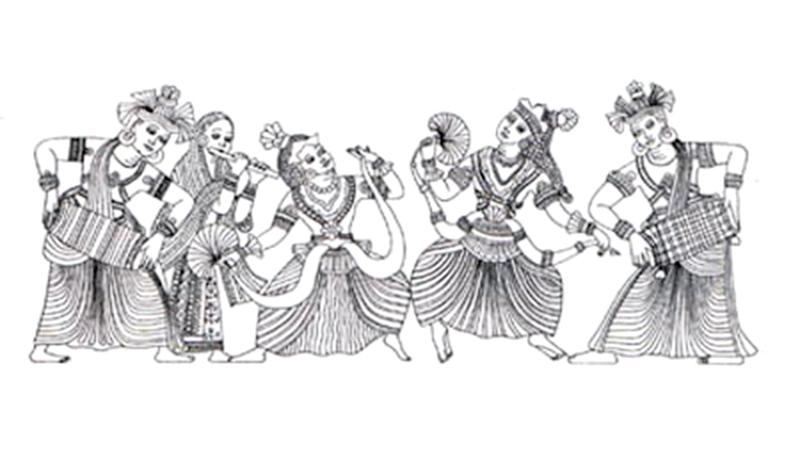
The music of Sri Lanka has its roots in four primary influences: ancient folk rituals, Buddhist religious traditions, the legacy of European colonisation, and the commercial and historical influence of nearby Indian culture—specifically, Bollywood cinema.
The Portuguese were the first Europeans to arrive in Sri Lanka, landing in the mid-15th century. They brought with them traditional cantiga ballads, ukuleles and guitars, as well as conscripted Africans (referred to, historically, as kaffrinhas), who spread their own style of music known as baila. The influence of both European and African traditions served to further diversify the musical roots of contemporary Sri Lankan music.
Folk music
Caste-based folk poems, Jana Kavi, originated as communal song shared within individual groups as they engaged in daily work. Today, they remain a popular form of cultural expression. Folk poems were sung by ancient people of Sri Lanka to minimise their loneliness, sadness, tiredness etc. There isn’t a known author for the folk poems. Kavi was also sung to accompany annual rituals. These ancient rites are rarely performed in contemporary Sri Lanka, but the preserved songs are still performed by folk musicians.
Another traditional Sri Lankan folk style is called the Virindu. It involves an improvised poem sung to the beaten melody of a rabana. Traditional song contests were held in which two virindu singers would compete through spontaneous verse. The Portuguese influenced Baila has been a popular folk tradition along the coastal districts in the past five hundred years and is now part of the mainstream music culture.
Sri Lankan country music
The art, music and dances of Sri Lanka were derived from ritualistic responses to natural phenomena. Sri Lanka’s earliest folk music was later influenced by the influx of Buddhist traditions. These songs were performed by commoners, and not merely recited by the priestly castes.
Kolam & Puppetry
Kolam music is a low country folk tradition of the south-west coast and its use was both in exorcism rituals as a form of healing and in masked comedy and drama.
Nurthi Music
Nurthi is a stage drama that influenced by Parasi theater as a consequence of arriving the drama troupe in the latter part of the 19th century, which belonged to the Elphinstone Dramatic Company of India. Nurthi is the colloquial Sinhala form of the Sanskrit term “Nritya”. The music of Nurthi was based on North Indian Music. Don Bastian of Dehiwala introduced Nurti firstly by looking at Indian dramas and then John De Silva developed it and performed Ramayanaya in 1886.
Sinhala light music
Some artists visited India to learn music and later started introducing light music. Ananda Samarakone was the pioneer of this attempt also composing the Sri Lankan National Anthem. Then Sunil Santha who also did not stick to Hindustani music introduced light music of his own, influenced by the Geethika (Christian hymns) tradition of Sri Lanka. Pandit Amaradeva is credited as the major contributor to the development of this genre into a truly Sri Lankan style.
It is enriched with the influence of folk music, kolam music, Nadagam music, Noorthy music and others too. Most of the musicians in Sri Lanka have come out with their own creations. The temple paintings and carvings used birds, elephants, wild animals, flowers and trees. The colors were made of nature. The traditional 18 Dances display the dancing of birds and animals. Mayura Wannama - The dance of the Peacock, Hanuma Wannama - The dance of the Monkey, Gajaga Wannama - The dance of the elephant, Thuraga Wannama - The dance of the horse.
The music is of several kinds. The folk music is created with only a few instruments and the frequency range is narrow. The folk songs and poems were used in social gatherings to work together. The Indian influenced Classical Music has grown to be unique. The traditional drama, music and songs are typically Sri Lankan.
